
Airports that handle between 20 and 30 million passengers annually occupy a unique space in global aviation. These airports are large enough to serve as regional powerhouses and international connectors, yet often small enough to offer smoother, more comfortable passenger experiences.
Most of these airports are consistently ranked among the world’s best for their efficiency, design, amenities, and customer satisfaction.
In this article, we examine ten such airports in 2025 that strike a fine balance between capacity and quality, highlighting the airlines that call them home and the features that make them stand out.
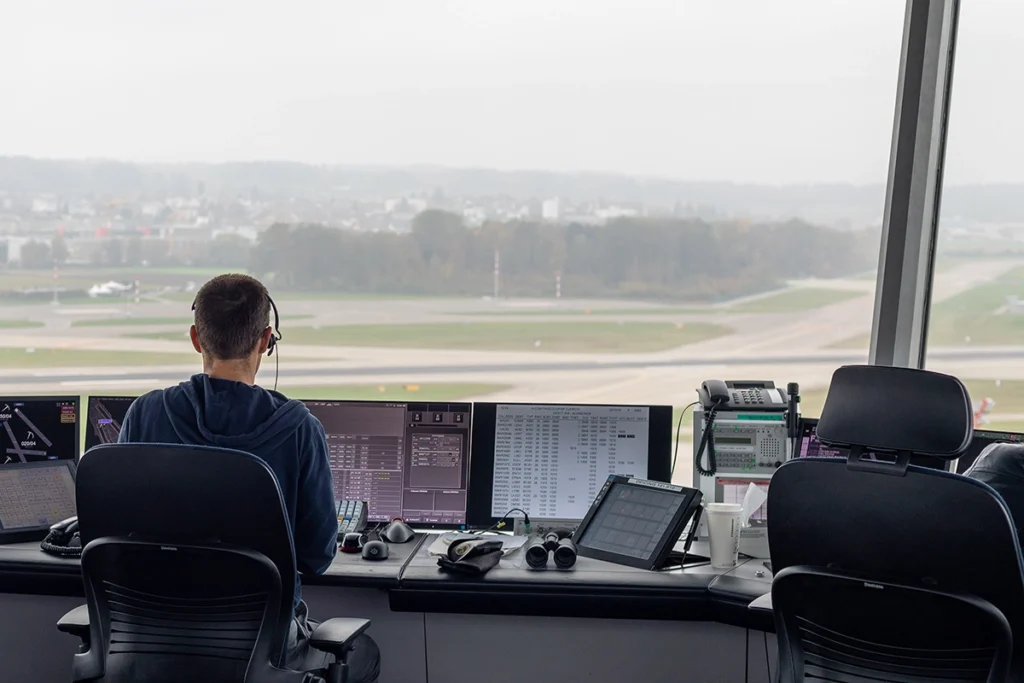 Photo: By Petar Marjanovic – Own work, CC BY-SA 3.0, https://commons.wikimedia.org/w/index.php?curid=83316425
Photo: By Petar Marjanovic – Own work, CC BY-SA 3.0, https://commons.wikimedia.org/w/index.php?curid=833164251. Zurich Airport (ZRH)
Zurich Airport (ZRH), Switzerland’s primary international gateway, continues to impress travelers with its efficiency, punctuality, and scenic setting. Known for high-quality services and easy connectivity, it serves as the main hub for SWISS International Air Lines. Lufthansa, Edelweiss Air, and Helvetic Airways also maintain a strong presence in this region.
The airport’s three-terminal layout ensures a seamless passenger journey from check-in to boarding. Cleanliness, short walking distances, and quick security procedures consistently earn Zurich top marks in global airport rankings. Zurich is especially appreciated for its quiet zones, family services, and extensive duty-free shopping.
With around 26 million passengers passing through in 2024, Zurich Airport handles a steady mix of European and long-haul traffic. Despite its modest size by global standards, it offers direct flights to major intercontinental destinations, all while maintaining the charm and efficiency that Swiss transportation is known for.
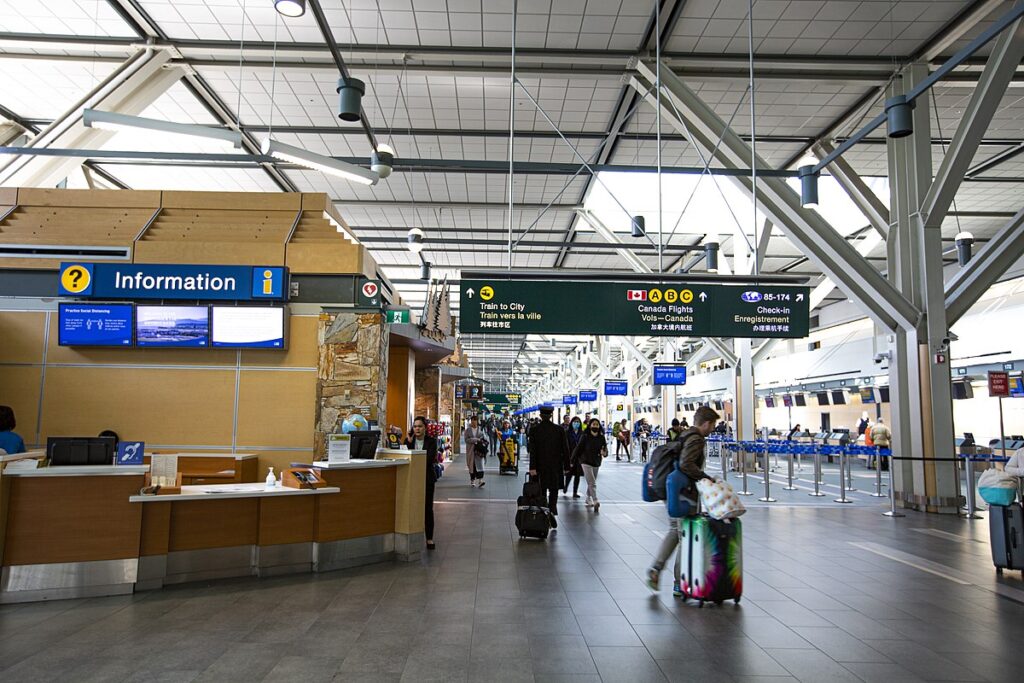 Vancouver International Airport | Image credit to Wikicommons |
Vancouver International Airport | Image credit to Wikicommons |2. Vancouver International Airport (YVR)
Vancouver International Airport (YVR), located in British Columbia, Canada, is celebrated for its Indigenous art displays, intuitive layout, and oceanic design motifs. Serving as a hub for Air Canada and WestJet, it also handles major global carriers like Cathay Pacific, Japan Airlines, and American Airlines.
YVR handled just under 25 million passengers in 2024, maintaining a reputation as one of North America’s most passenger-friendly airports. With excellent amenities such as free Wi-Fi, spa services, and local culinary offerings, it creates a welcoming environment for both domestic and international travelers.
Moreover, sustainability is also a core value here, with the airport implementing green initiatives such as electric ground vehicles and LEED-certified terminals. The balance of efficiency, hospitality, and local cultural elements makes Vancouver a top pick in this passenger category.
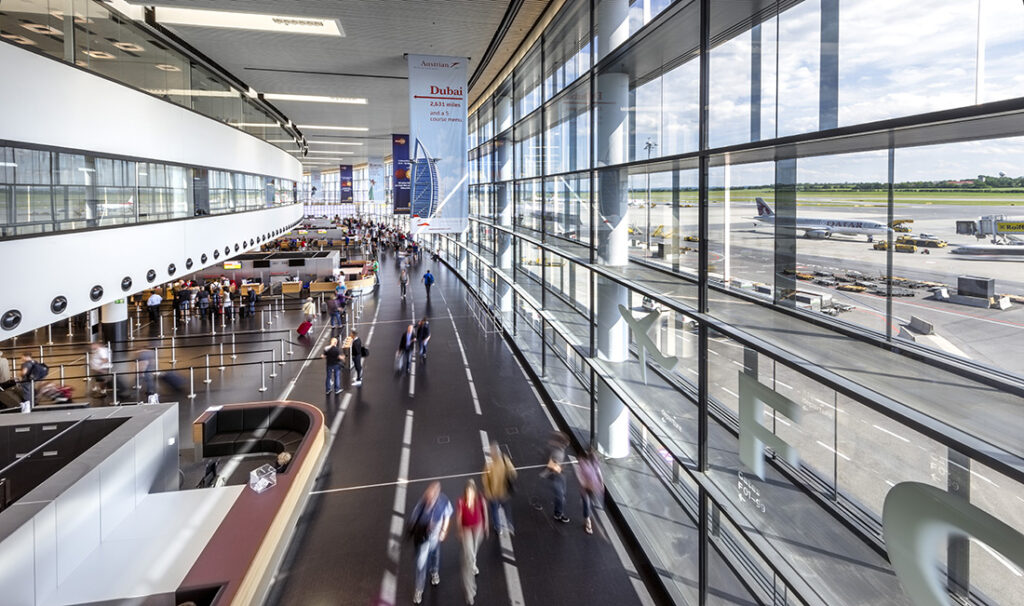 Terminalerweiterung Nord-Ost, Flughafen Wien AG, Check-in Halle am 07.06.2012
Terminalerweiterung Nord-Ost, Flughafen Wien AG, Check-in Halle am 07.06.20123. Vienna International Airport (VIE)
Austria’s Vienna International Airport is a key Central European hub with extensive connections to Eastern Europe, the Middle East, and Asia. It is the home base for Austrian Airlines and also sees significant operations from Ryanair, Lufthansa, and Turkish Airlines.
Vienna handled over 27 million passengers in 2024 and continues to expand. Passengers appreciate the airport’s modern infrastructure, short transfer times, and direct rail connections to the city. The airport also boasts multiple lounges, excellent dining options, and modernized terminals that reduce crowding and improve passenger flow.
What sets Vienna apart is its seamless connectivity and status as a strategic hub for travelers heading eastward. With a growing number of long-haul destinations and strong on-time performance, Vienna is earning its place among the world’s best in its size category.
 Photo- Ardfern; Wikimedia Commons
Photo- Ardfern; Wikimedia Commons4. Copenhagen Airport (CPH)
Copenhagen Airport (CPH) remains one of Northern Europe’s best-managed airports. It’s the largest airport in Denmark and serves as the central hub for Scandinavian Airlines (SAS) and Norwegian Air Shuttle. Other regular carriers include KLM, Lufthansa, and British Airways.
With over 28 million passengers in 2024, the airport is popular for its architectural design, intuitive signage, and efficient security screening. Copenhagen’s terminals are spacious and clean, and travelers benefit from a rich selection of cafes and Nordic-inspired shops.
Another highlight is its close proximity to the city center, just a short train ride away, making it an ideal airport for both business and leisure travelers. Copenhagen combines Scandinavian style with efficient infrastructure, offering a reliable travel experience year-round.
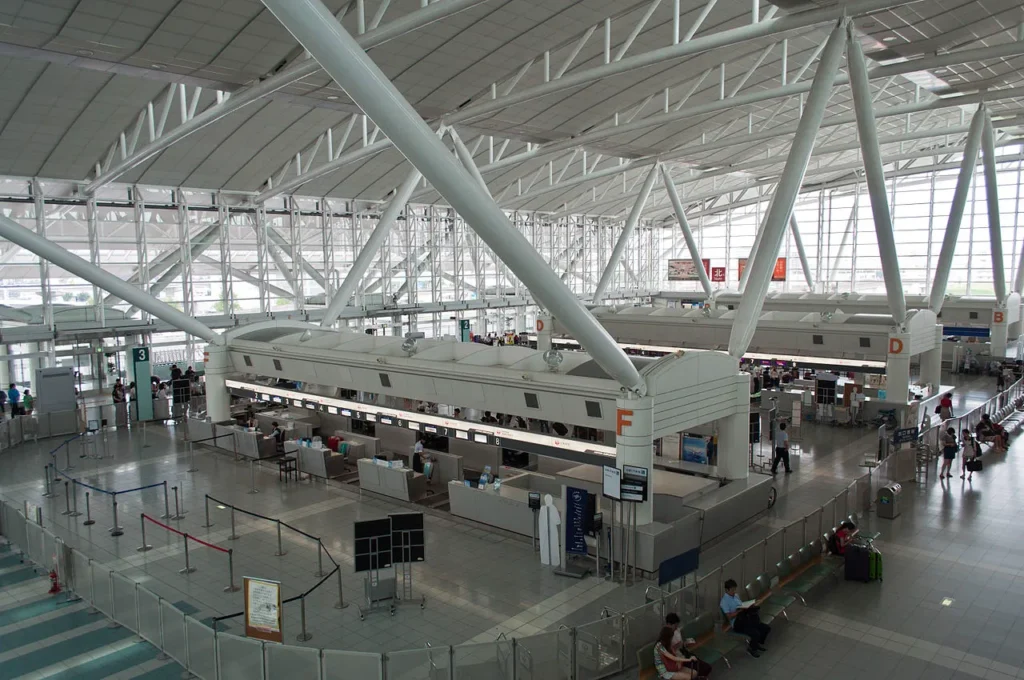 Fukuoka Airport; Photo- Wikipedia
Fukuoka Airport; Photo- Wikipedia5. Fukuoka Airport (FUK)
Fukuoka Airport (FUK) is one of Japan’s busiest regional hubs and serves as a vital link between the island of Kyushu and the rest of Asia. Despite being situated right in the city center, the airport managed to handle over 24 million passengers in 2024. Major airlines operating here include All Nippon Airways (ANA), Japan Airlines (JAL), Peach Aviation, and Korean Air.
In addition, the convenience of its location sets Fukuoka apart. It’s just a five-minute subway ride from the city center. The airport also provides a smooth experience with efficient customs, a newly upgraded international terminal, and multilingual signage to assist global travelers.
As Japan continues to grow as a tourism hotspot, Fukuoka’s role as a key regional airport is more vital than ever. It successfully blends the accessibility of a domestic hub with the growing capabilities of an international airport.
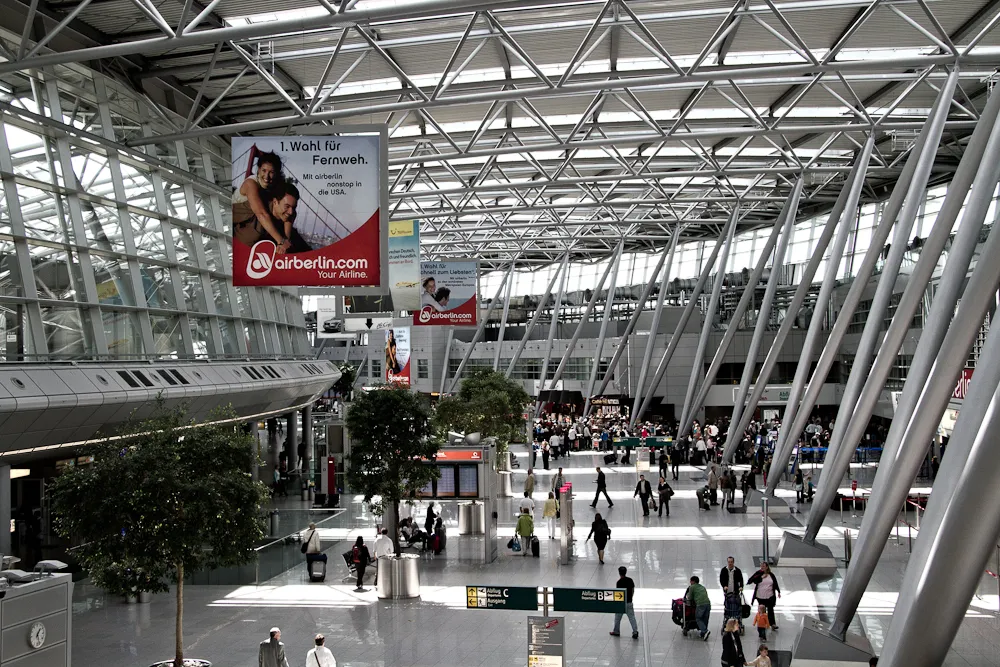 Düsseldorf Airport. Photo- Andreas | Flickr
Düsseldorf Airport. Photo- Andreas | Flickr6. Düsseldorf Airport (DUS)
Located in western Germany, Düsseldorf Airport serves as a major international airport and gateway to the Rhine-Ruhr region. It handled just over 25 million passengers in 2024 and remains a popular base for Eurowings, Lufthansa, and Condor.
Düsseldorf handles a mix of leisure and business routes across Europe, the Middle East, and North America. Its well-connected rail link and integrated terminal design help ensure a smooth passenger experience, even during peak hours.
Moreover, the airport also offers a variety of lounges, shopping arcades, and restaurants, reflecting both local and global tastes. As a growing airport in Europe’s busiest aviation market, Düsseldorf continues to rise in rankings thanks to its reliability and diverse route network.
 Haikou Meilan International Airport Terminal 2; Photo- Tyg728 | Wikimedia Commons
Haikou Meilan International Airport Terminal 2; Photo- Tyg728 | Wikimedia Commons7. Haikou Meilan International Airport (HAK)
Haikou Meilan International Airport on China’s Hainan Island is a rising star in regional aviation. Known for its tropical design and spacious new Terminal 2, the airport handled over 23 million passengers in 2024.
China Southern Airlines and Hainan Airlines dominate operations here, along with Beijing Capital Airlines.
As Hainan gains status as a free-trade zone and travel hotspot, Haikou is investing heavily in infrastructure and international connections. The airport boasts one of China’s most beautiful terminal buildings, filled with palm trees and wide glass walls.
In addition to its aesthetic appeal, Haikou offers efficient transit services and is well connected to major cities such as Beijing, Shanghai, and Bangkok. The airport’s transformation into an international gateway for leisure tourism continues to elevate its global profile.
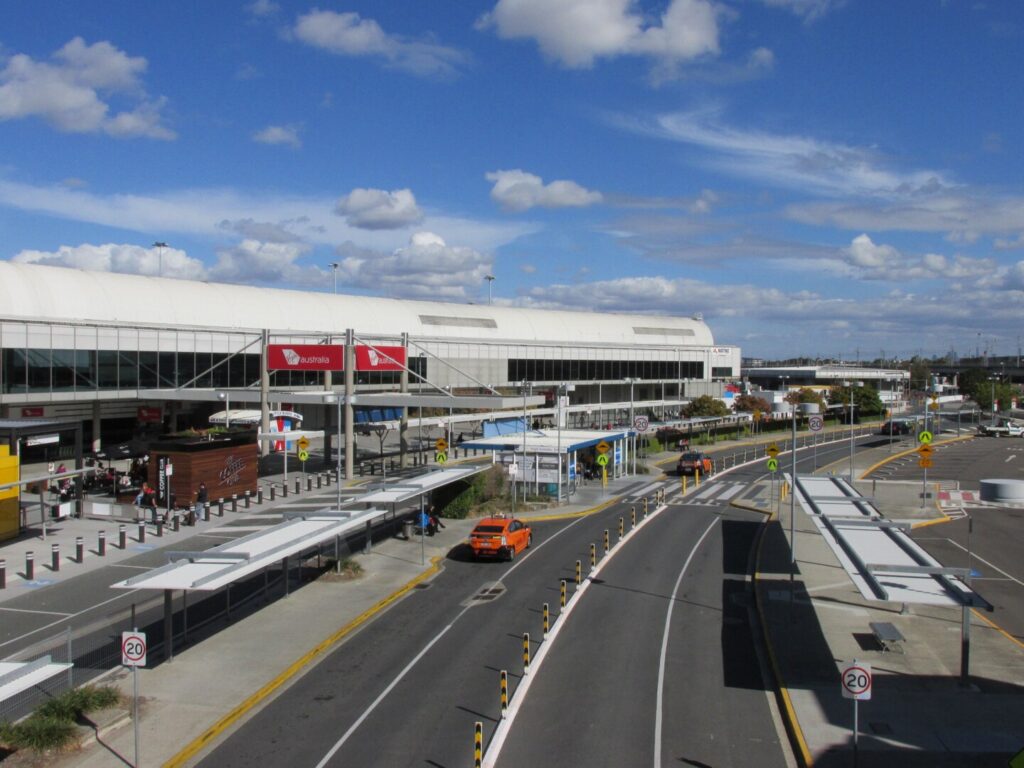 Brisbane Airport. Photo:- By User: Orderinchaos – Own work, CC BY-SA 3.0, https://commons.wikimedia.org/w/index.php?curid=34244597
Brisbane Airport. Photo:- By User: Orderinchaos – Own work, CC BY-SA 3.0, https://commons.wikimedia.org/w/index.php?curid=342445978. Brisbane Airport (BNE)
Brisbane Airport (BNE) in Queensland, Australia, handled around 22.5 million passengers in 2024. It plays a crucial role in connecting regional Australia with international markets and is a key hub for Virgin Australia and Qantas. Jetstar and Air New Zealand also maintain strong operations here.
The airport is known for its user-friendly layout, modern international terminal, and expanding network of Asia-Pacific routes. Brisbane also benefits from strong links to mining regions, making it essential for both leisure and business travel.
In preparation for the 2032 Olympics, Brisbane is undergoing significant development, including a third terminal and runway upgrades. These improvements are positioning it as a future global hub and strengthening its standing among the world’s best medium-sized airports.
 New Chitose Airport; Photo- Japan Guide
New Chitose Airport; Photo- Japan Guide9. New Chitose Airport (CTS)
New Chitose Airport (CTS) is the primary airport serving Hokkaido, Japan’s northernmost island. With a passenger throughput of about 21 million in 2024, it is a major domestic gateway and increasingly popular among international travelers, particularly from South Korea, Taiwan, and China. ANA, JAL, and Peach Aviation are the key carriers here.
Its impressive domestic terminal offers unique amenities, such as an on-site hot spring bath (onsen), a movie theater, and gourmet dining featuring regional delicacies like fresh seafood and ramen. These elements turn a simple layover into a memorable part of the journey.
The airport is also well connected to Sapporo via express train, making it highly accessible for winter tourists visiting ski resorts. As interest in Hokkaido continues to grow, New Chitose is expected to gain prominence in international rankings.
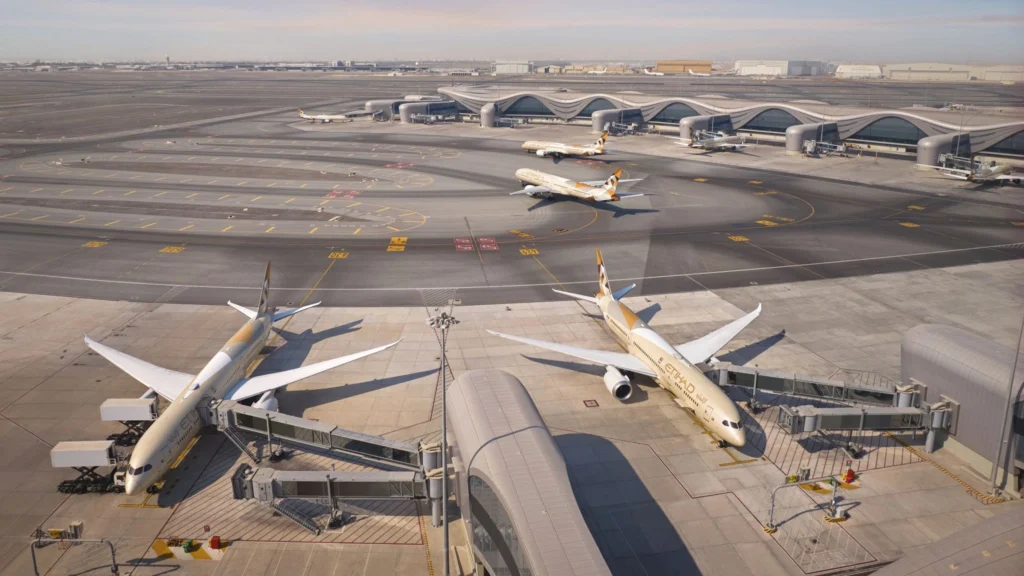 Photo: Arik De, Etihad
Photo: Arik De, Etihad10. Abu Dhabi International Airport (AUH)
Rounding out the list is Abu Dhabi International Airport, the capital airport of the United Arab Emirates. AUH saw a resurgence in traffic in 2024, with over 29 million passengers served. It is the home base of Etihad Airways, which provides extensive connectivity across the Middle East, Europe, Asia, and North America.
With the recent opening of its state-of-the-art Terminal A, the airport now has significantly increased capacity and a refreshed, futuristic design. The new terminal enhances the passenger experience with biometric check-ins, luxury lounges, and duty-free shopping that rivals some of the world’s largest hubs.
Strategically positioned between east and west, Abu Dhabi International is poised to become an even stronger player in global aviation. Its emphasis on premium services and fast transfers adds to its growing reputation.
 Photo: Skytrax
Photo: SkytraxConclusion – Best Airports in 2025
Airports handling between 20 and 30 million passengers in 2025 are a diverse group, ranging from high-tech international gateways to stylish regional connectors. What unites them is a consistent commitment to passenger experience, efficient operations, and continued investment in infrastructure.
As aviation continues to recover and expand, these airports will remain essential for smooth, global connectivity. Whether you’re traveling for business or leisure, these ten airports demonstrate how scale doesn’t have to come at the cost of quality.
Stay tuned with us. Further, follow us on social media for the latest updates.
Join us on Telegram Group for the Latest Aviation Updates. Subsequently, follow us on Google News.
Top 10 Best Airports in the World in 2025: 50 to 60 Million Passengers
The post Top 10 Best Airports in the World in 2025: 20 to 30 Million Passengers appeared first on Aviation A2Z.

















